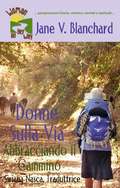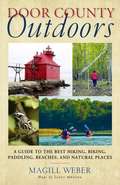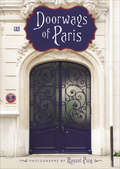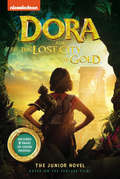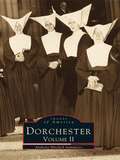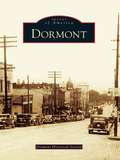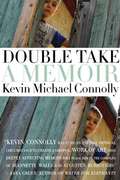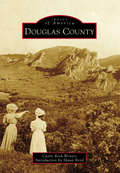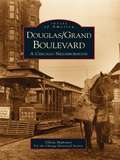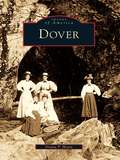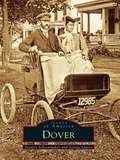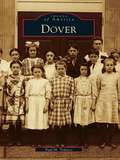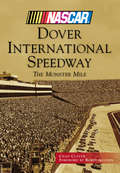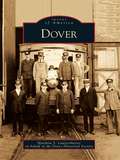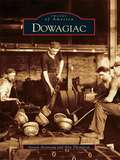- Table View
- List View
Don't Tell Mum I Work on the Rigs: (She Thinks I'm a Piano Player in a Whorehouse)
by Paul CarterA take-no-prisoners approach to life has seen Paul Carter heading to some of the world's most remote, wild and dangerous places as a contractor in the oil business. Amazingly, he's survived (so far) to tell these stories from the edge of civilization. He has been shot at, hijacked and held hostage; almost died of dysentery in Asia and toothache in Russia; watched a Texan lose his mind in the jungles of Asia; lost a lot of money backing a scorpion against a mouse in a fight to the death, and been served cocktails by an orangutan on an ocean freighter. And that's just his day job. Taking postings in some of the world's wildest and most remote regions, not to mention some of the roughest rigs on the planet, Paul has worked, got into trouble, and been given serious talkings to, in locations as far-flung as the North Sea, Middle East, Borneo and Tunisia, as exotic as Sumatra, Vietnam and Thailand, and as flat-out dangerous as Columbia, Nigeria and Russia, with some of the maddest, baddest and strangest people you could ever hope not to meet.
Don't Tell Mum: Hair-raising Messages Home from Gap-year Travellers
by Simon Hoggart Emily MonkThe email home is an essential part of every gap-year traveler's journey. Where once the news of narrowly surviving a bus crash on the dirt-roads of India, waking up to gunfire in Honduras, or fending off marriage proposals from complete strangers would have made it home only on the back of a slow-moving battered postcard, these days those tantalizing details and terrible mistakes are now recorded immediately and distributed liberally for every friend and family member to wince at. In Don't Tell Mum, Simon Hoggart and Emily Monk have collected together the funniest, most surreal, most alarming gap-year emails into a treasure-trove of correspondence. Accompanied by their wicked commentary, Don't Tell Mum gives the aspiring traveler the low-down on what not to do when trotting the globe.
Donne sulla Via: Abbracciando il Cammino
by Jane V. Blanchard Siriana NascaDescrizione del libro: Cosa ti piace di più quando leggi di avventure: descrizioni del terreno, della cultura, delle sfide, della crescita personale, delle interazioni tra altri avventurieri? Donne sulla Via: abbracciando il Cammino combina con successo tutti questi elementi in un racconto sincero e personale del pellegrinaggio lungo il Cammino di Santiago di cinquecentocinquanta chilometri di Jane V. Blanchard, che ha attraversato i Pirenei partendo da St-Jean-Pied-de-Port in Francia fino ad arrivare a Roncisvalle in Spagna, e poi ha continuato verso ovest attraverso la Spagna settentrionale fino a Santiago di Compostela. Per oltre un millennio, i cristiani hanno fatto questo pellegrinaggio alla cattedrale di Santiago, dove sono sepolti i resti dell’apostolo San Giacomo. Oggi, questo viaggio è noto come un itinerario culturale europeo che attira persone da tutto il mondo. Nel 2011, più di 183.000 persone hanno completato il pellegrinaggio; il 44% di questi pellegrini erano donne. Anche se Donne sulla Via parla del viaggio di Jane sul Cammino di Santiago (noto anche come la “Via”) e delle discussioni con le donne incontrate durante il pellegrinaggio, questo non è un libro per “ragazze”. Si tratta di abbracciare il Cammino, i cambiamenti personali, la bellezza e il fascino del più popolare tra tutti i pellegrinaggi a Santiago di Compostela, il Camino Francés. - Scopri perché persone da tutto il mondo percorrono il Cammino. - Impara come prepararti per il Cammino, i riti quotidiani per il percorso a lunga distanza e il cameratismo condiviso tra questi pellegrini moderni. - Visualizza la bellezza del nord della Spagna attraverso le vivide descrizioni di Jane. - Comprendi perché così tante persone abbracciano il Cammino. “Uno sguardo articolato, ben osservato e ponderato per percorrere il Cammino”. ~ Adam Nathan “Mi sentivo come se fossi anch'io una pellegrina mentre visualizzavo i
Donora
by Charles E. Stacey Brian Charlton David LonichThe industrial community of Donora was founded in 1901 on a bend of the Monongahela River, 30 miles south of Pittsburgh. The founding of Donora was the result of social, political, and economic interaction among elite and powerful capitalists. Andrew and Richard Mellon partnered with William H. Donner and Henry C. Frick to create the Union Improvement Company and build a mill, developing the surrounding municipality. In less than a year, the population of Donora quickly boomed from an original 12 residents to more than 4,000 inhabitants. The opportunity for employment drew people from all over the United States and Europe, generating a diverse community. Regardless of differences, the races, religions, and ethnic groups that settled in Donora shared a common value system based on education, hard work, and devotion to faith and family.
Donut Nation: A Cross-Country Guide to America's Best Artisan Donut Shops
by Ellen BrownDonuts are America’s favorite treat and, in Donut Nation, Ellen Brown travels the United States in search of the best donut shops. From beloved mom-and-pop establishments and roadside cafes to innovative boutiques and artisanal restaurants, there are more than seventy hand-crafted donut shops to take you from Maine to Arizona. Perfect for the cross-country explorer or home chef, it also includes mouthwatering recipes for donuts like Orange-Pistachio Cake, Maple Bacon, and Strawberry-Buttermilk. Donut Nation is a one-of-a-kind trip to the heart of an American classic.
Doodlebug & Dandelion: Snow-Globe Love
by Pamela DellDoodlebug Pinkley tries to avoid a young admirer while he and his family stay at an ice hotel.
Door County Outdoors
by Magill WeberA picturesque peninsula with 298 miles of Lake Michigan shoreline, state parks, forests, and cozy inns, Door County is one of the Midwest’s prime tourist attractions. Magill Weber explores the many recreational opportunities available to visitors, including secret spots known only to locals and longtime seasonal residents. Wisconsin native Janet Mrazek contributes 125 detailed and easy-to-follow maps. With suggestions of more than 150 scenic hikes, biking and paddling routes, end-of-the-road beaches, lighthouses, and wildlife-watching sites, and descriptions of the local flora and fauna,Door County Outdoorsis the ultimate guide for active travelers and nature enthusiasts.
Doors of Venice: Views of a Vanishing City
by Greg MillerA visit to Venice, a city with no cars, allows you to envision yourself back in time several hundred years ago, with traces of the City of Canals' storied history on display wherever you look. However, the future of Venice is uncertain due to rising sea levels and overtourism. During a rare moment when tourism lulled due to the pandemic, photographer Greg Miller took advantage of the Venice's quiet streets to capture images that go beyond the expected views of the floating city. Miller's long-exposure images focus on Venice's doors, uncovering the stories they reveal about the city's past residents and its vanishing culture. Readers can luxuriate in the intricate details of the centuries-old doors that are captured on these pages. From the quality of the wood, to the patinas and colors, to the antique hardware and ornate architectural components, the wonders of these portals to the past are on full display. But, due to Venice's contemporary challenges, the doors themselves are under threat. As native Venetians leave the city and homes are rapidly purchased by corporate entities, these architectural gems risk being replaced or modified for cost-effective maintenance. This book serves as a visual preservation of these historical portals, providing a chance to appreciate their beauty and significance before they potentially disappear forever.
Doorways of Paris
by Raquel PuigFrom the creator of the popular Instagram account of the same name: More than 300 stunning photographs of Paris’s most enchanting doorways. What’s behind the doorways of the world’s most beautiful city? History. Mystery. Refuge. Beauty. Love. Possibility. Doorways of Paris presents a new way to explore the most beautiful city in the world. Organized by arrondissement so residents and visitors alike can seek out the doors as they walk, this “highly recommended” book celebrates the glories of the city’s architecture, from Napoleonic majesty to art nouveau whimsy, Haussmannian symmetry to art deco elegance (Culture Honey). “Doorways to Paris is a portal to Parisian life that will have readers longing to find a doorway to call their own.” —Resident Magazine
Dora and the Lost City of Gold: The Junior Novel
by Steve BehlingDora and the Lost City of Gold is coming to theaters August 2, 2019 from Paramount Pictures, starring Isabela Moner, Benicio Del Toro, Eva Longoria, Michael Peña, and more.Dora and the Lost City of Gold: The Deluxe Junior Novel retells the entire action-packed adventure of the movie and features eight pages of color photos!Adventure is . . . grown up.Having spent most of her life exploring the jungle with her parents, nothing could prepare Dora for the most dangerous adventure of all—high school. After one potentially fatal accident too many, Dora’s parents force her to move to the city. When she arrives, Dora is reunited with her cousin Diego, who seems more concerned with his image than anything else. Despite Dora’s sunny outlook, she finds that she doesn’t really fit in at her new school and longs to return to her jungle home. But all of that changes when Dora and her friends are captured by a group of mercenaries. The teens manage to escape, only to find out Dora’s parents have gone missing!Always the explorer, Dora quickly finds herself leading Boots (her best friend, a non-talking monkey), Diego and a ragtag group of teens on an adventure to save her parents and solve the impossible mystery behind the lost city of gold.
Dorchester: Volume II
by Anthony Mitchell SammarcoIn Dorchester Volume II, local author Anthony Mitchell Sammarco continues his detailed look at this diverse town that he began in Volume I, which the Boston Globe hailed as a best-seller. Founded in 1630 by Puritans, Dorchester has experienced spectacular growth over the last few centuries; the Old Colony Railroad and later the Red Line providedimpetus for the quick development of this "streetcar suburb." From a town of twelve thousand residents in 1870, when it was annexed to the city of Boston, to one hundred thousand at the turn of the century, Dorchester became home to a quarter of a million people by 1930. The development of the town in the period from 1870 to 1920 saw architects, builders, and residents all working to create a pleasant place to live and work. Dorchester's evolution from a farming community to a vibrant, buzzing town can be seen in the unique form of American architecture developed in Dorchester--the "three decker," built between the 1890s and World War II, and popular among people of all classes and economic means. The influx of immigrants from countries around the world has given Dorchester a diverse and colorful character, which is the source of pride for many of its residents.
Dorchester: Volume Ii (Images of America)
by Anthony Mitchell SammarcoThe ease of transportation via the Old Colony Railroad revolutionized Dorchester in the period between 1850 and the Civil War and brought a residential building boom that lasted the next seven decades. The town was annexed to the city of Boston in 1870, and by the turn of the century, Dorchester was one-fifth of the entire city. By the time of the Great Depression, the three-decker, Dorchester's unique contribution to American architecture, was a trademark of the community. Dorchester, part of the Then & Now series, places vintage images alongside contemporary photographs to explore the history of this community's public schools, places of worship, transportation, streetscapes, and historic houses.
Dork Diaries: Jokes, drama and BFFs in the global hit series (Dork Diaries #15)
by Rachel Renee RussellThe BRAND NEW Dork Diaries instalment - join the jokes, the drama and the aDORKable BFFs in this mega-selling series for fans of Lottie Brooks. Now with over 50 million copies in print worldwide! Oh la la! Nikki and her band are invited to Paris for a super cool photoshoot – it&’s a dream come true! Nikki can&’t wait to learn new art styles, practice her French and explore the most romantic city in the world with her crush Brandon. But when MacKenzie starts to stir trouble and invites old friend André to be their tour guide, the drama starts. Can Nikki still enjoy her dream vacay, or will it become a dorky disaster?Have you read all the DORK DIARIES series?Dork Diaries Dork Diaries 2: Party Time Dork Diaries 3: Pop Star Dork Diaries 4: Skating Sensation Dork Diaries 5: Dear Dork Dork Diaries 6: Holiday Heartbreak Dork Diaries 7: TV Star Dork Diaries 8: Once Upon a Dork Dork Diaries 9: Drama Queen Dork Diaries 10: Puppy Love Dork Diaries 11: Frenemies Forever Dork Diaries 12: Crush Catastrophe Dork Diaries 13: Birthday Drama Dork Diaries 14: Spectacular Superstar Dork Diaries 15: I Love Paris!
Dormont (Images of America)
by Dormont Historical SocietyAdjoining the southern border of Pittsburgh, Dormont is a small, independent borough whose name means "mountain of gold" in French. The borough developed rapidly even before its incorporation in 1909. In the early 1900s, the extension of Pittsburgh's railway system, the opening of the Liberty Tunnels, and the building of the Liberty Bridge, along with the recreational opportunities the borough has to offer, encouraged many families to settle and escape the pollution of Pittsburgh's steel mills. Through the years, the direct access to the city's business and cultural areas has drawn residents to the historic borough.
Double Cross (Alex Cross #13)
by James PattersonJust when Alex Cross's life is calming down, he's drawn back into the game to confront the Audience Killer - a terrifying genius who stages his killings as public spectacles in Washington, DC and broadcasts them live on the net. In Colorado, another criminal mastermind is planning a triumphant return. From his maximum-security prison cell, Kyle Craig has spent years plotting his escape and revenge. Craig prefers to work alone, but if joining forces with DC's Audience Killer helps him to get the man who put him away - Alex Cross - then so be it ...
Double Cross (Alex Cross #13)
by James PattersonJust when Alex Cross's life is calming down, he's drawn back into the game to confront the Audience Killer - a terrifying genius who stages his killings as public spectacles in Washington, DC and broadcasts them live on the net. In Colorado, another criminal mastermind is planning a triumphant return. From his maximum-security prison cell, Kyle Craig has spent years plotting his escape and revenge. Craig prefers to work alone, but if joining forces with DC's Audience Killer helps him to get the man who put him away - Alex Cross - then so be it ...(P)2007 Hachette Audio
Double Take: A Memoir
by Kevin Michael ConnollyKevin Michael Connolly is a twenty-three-year old man who has seen the world in a way most of us never will. Whether swarmed by Japanese tourists at Epcot Center as a child or holding court at the X Games on his mono-ski, Kevin Connolly has been an object of curiosity since the day he was born without legs. Growing up in rural Montana, he was raised like any other kid (except, that is, for his father's MacGyver-like contraptions such as the "butt bucket." As a college student, Kevin trawled to seventeen countries on his skateboard, including Bosnia, China, Ukraine, and Japan. In an attempt to capture the stares of others, he took more than 33,000 photographs of people staring at him. In this dazzling memoir, Connolly casts the lens inward to explore how we view ourselves and what it is to truly see another person. We also get to know his quirky and unflappable parents and his girlfriend. From the home of his family in Helena, Montana, to the streets of Tokyo and Kuala Lumpur, Kevin's remarkable journey will change the way you look at others, and the way you see yourself.
Douglas County: A Photographic Journey (Images of America)
by Castle Rock Writers Shaun BoydCastle Rock Writers bring readers a collection of vintage images and sketches of Douglas County from approximately 1861 to 1950, covering the settling of towns such as Parker and Sedalia and rural areas like Cherry Valley and Daniel�s Park. Early homesteaders, adventurers, and prospectors journeyed west following the 900-plus miles along the Cherokee Trail, seeking the wealth of gold or needing the curative air of Colorado. On the long and arduous trip, travelers stopped at the Twenty Mile House in Parker or the Pretty Woman Ranch on the First Territorial Road. They needed to clean off the dust and dirt and enjoy a nourishing meal before the final push to Denver and beyond. Some simply stayed. They homesteaded ranches, staked out mines, and built small towns in the rolling plains, mesas, forested hills, and mountains that make up the 843 square miles of Douglas County. In the first half of the 20th century, the region grew into cohesive communities, where families thrived through ingenuity and hard work. Neighbors supported neighbors.
Douglas/Grand Boulevard: A Chicago Neighborhood
by Olivia Mahoney Chicago Historical SocietyThe history of Chicago can be told through its neighborhoods, and perhaps none is more telling than Douglas/Grand Boulevard on the city's south side. The future site of the neighborhood remained a sparsely settled prairie until the early 1850s, when Stephen A. Douglas purchased a large tract of land and began developing a residential subdivision for the wealthy. Douglas/Grand Boulevard: A Chicago Neighborhood explores the development of this distinctive community and the many obstacles its residents encountered. Originally a predominately white neighborhood, Douglas/Grand Boulevard became an African-American community during the Great Migration when thousands of Southern blacks moved north seeking greater opportunities. After the 1919 Race Riot, an increasing number of white residents moved away from the neighborhood, and the community became a national model of black achievement.
Dover
by Donna P. HearnThrough the years, Dover's landscape has been greatly shaped by the contributions of its many influential residents. Upon his arrival, Richard Sackett, the first English settler in eastern Dutchess County, gazed at the soaring hillsides and gave the town its current name. Dover's most important and pivotal event occurred in 1731, when it hosted representatives at an interstate boundary conference. That indenture signing set the judicial line between the colony of Connecticut and the province of New York. After 1845, the railroad exported iron and brought artists like Asher Durand, whose painting of Dover's plains hangs today in the Smithsonian American Art Museum. With the train came tourists and painters, who were drawn to the sites they saw in Durand's works. In the 20th century, the area changed again as old farms disappeared and new industry moved into town. While the community sent men to war and compassionately housed the mentally ill, the Dover Drag Strip made history as one of the first big drag racing tracks.
Dover
by George Laurie Stanley SchoonmakerWhen Dover was settled in 1722, the only inhabitants of this northern New Jersey wilderness were Native Americans. The early iron forges along the mighty Rockaway River were soon developed, followed by the Morris Canal; it was, however, the coming of the railroad in 1848 that truly transformed the small village. Two hundred and seventy-five years later, Dover is still evolving. In Dover, the town's colorful and diverse past is chronicled through over 200 vintage, many neverbefore-seen photographs, including images of the historic Morris Canal, the majestic churches, theaters, schools, factories, and downtown businesses. See how Blackwell Street looked 100 years ago, and look at sights long gone, such as the Dover speedway, the trolleys, and early automobiles. Most importantly, see the faces of Dover's people, both past and present, that have enriched and molded its past.
Dover (Images of America)
by Paul H. TedescoOriginally part of the Dedham Grant of 1635, Dover, Massachusetts, became Dedham's Fourth Precinct in 1729 and the Springfield Parish of Dedham in 1748. When the Commonwealth incorporated it in 1836, Dover's economy was based on farming and grazing. Several companies, including the E.F. Hodgson Company and the Harvard Apparatus Company, successfully manufactured portable houses and medical instruments in Dover. However, they eventually left, as Dover remained agriculturally based. By 1896, Dover had become a suburban community. From 1900 to 1914, wealthy Bostonians--many of them members of the Norfolk Hunt Club--built at least eighteen spacious country estates in Dover, far from the noise and hubbub of the city. Population grew slowly after World War I, but in 1945, the town increased in numbers, as veterans returned from World War II and others saw the convenience of commuting to work in Boston while living in a pastoral environment. Once the home of Sen. Leverett Saltonstall, Gov. Francis Sargent, and benefactress Amelia Peabody, Dover today is an elegant country town, a mixture of estates, open fields, forests, and family neighborhoods.
Dover International Speedway: The Monster Mile
by Chad Culver Bobby AllisonIn the fertile farmlands of Delaware, there is a monster--a one-mile, concrete oval that has earned a reputation for being one of the toughest NASCAR® tracks since its first race in 1969. Built upon a farmer's field and airstrip, Dover International Speedway has a story filled with dreams and determination. From Richard Petty's first win at the speedway in 1969 through today's modern NASCAR heroes, "The Monster Mile" has witnessed some of racing's most memorable moments and continues to provide some of the best racing in NASCAR to this day. Many rare images have been gathered to provide a never-before-seen look at this historic speedway. Take a journey through time on one of the toughest, fastest, and most unique tracks ever built.
Dover: Proceedings Of The One Hundred And Twenty-fifth Anniversary Of The Incorporation Of The Town Of Dover, Massachusetts, Wednesday, July 7, 1909 (classic Reprint) (Images of America)
by Dover Historical Society Matthew S. LautzenheiserIn 1807, Christian Deardorff and Jesse Slingluff set out for the Ohio frontier. Before leaving, the men laid out the plat of a village that would sit at the banks of the Tuscarawas River. Over the next 10 years as Deardorff toiled away in his bachelor cabin, he held on to the dream of building his vision. The original plat map the two men devised contained 256 lots with land set aside for churches, schools, and a spacious downtown square. Today, over 200 years after Slingluff and Deardorff filed their plat at Zanesville, Dover continues to reflect their vision of a pleasant little town situated on the Tuscarawas River.
Dowagiac
by Ann Thompson Steven ArseneauThe story of Dowagiac's first 100 years may ring familiar to other small cities across the United States. After Dowagiac was established on a railroad line in 1848, new settlers arrived and had the opportunity to establish large-scale factories in the young village. This growth would last for afull century, fueled by the Round Oak Stove Company and other manufacturers in the city. Because of its manufacturing base, immigrants moved to Dowagiac, and the small city enjoyed strong business and manufacturing districts, solid educational institutions, and a vibrant social life. Surrounding lakes provided one venue for entertainment, while downtown Dowagiac offered theaters and fairs. This book documents and celebrates the history of Dowagiac with over 200 photographs from the collection of the Museum at Southwestern Michigan College.


